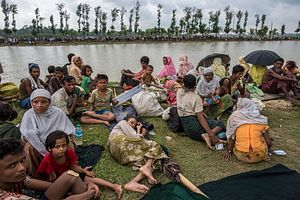According to United Nations estimates, about 146,000 Rohingya Muslims have fled from violence in Myanmar since August 25, 2017. The latest surge brings the total number to 233,000 Rohingya who have sought refuge in Bangladesh since October last year. The new arrivals are scattered in different locations in southeastern Bangladesh. More than 30,000 Rohingya are estimated to have sought shelter in the existing refugee camps of Kutupalong and Nayapara. Many others are living in makeshift sites and local villages.
Rohingyas began to flee from military oppression — first in 1978 and then again in 1991-92 — in major influxes of some 500,000 people. Presently, around 32,000 registered refugees stay in the UNHCR-run camps in Cox’s Bazar, while another estimated 500,000 unregistered refugees live outside the camps. Consequently, most of the unregistered refugees are deemed underprivileged according to the scale of basic human rights.
The Bangladeshi government has accommodated the Rohingya to a certain point, but considering limited resources as well as the poor conditions its own population lives under, it is hardly in a position to resolve the issue on its own.
The Rohingya refugee issue has been a long-standing problem and, unfortunately, the international community has remained mostly mute, unwilling to play a role in helping to resolve the problem. More than 35 years since it began, the Rohingya crisis is long overdue for a solution.
Probal Rashid is a documentary photographer and photojournalist working in Bangladesh.















































